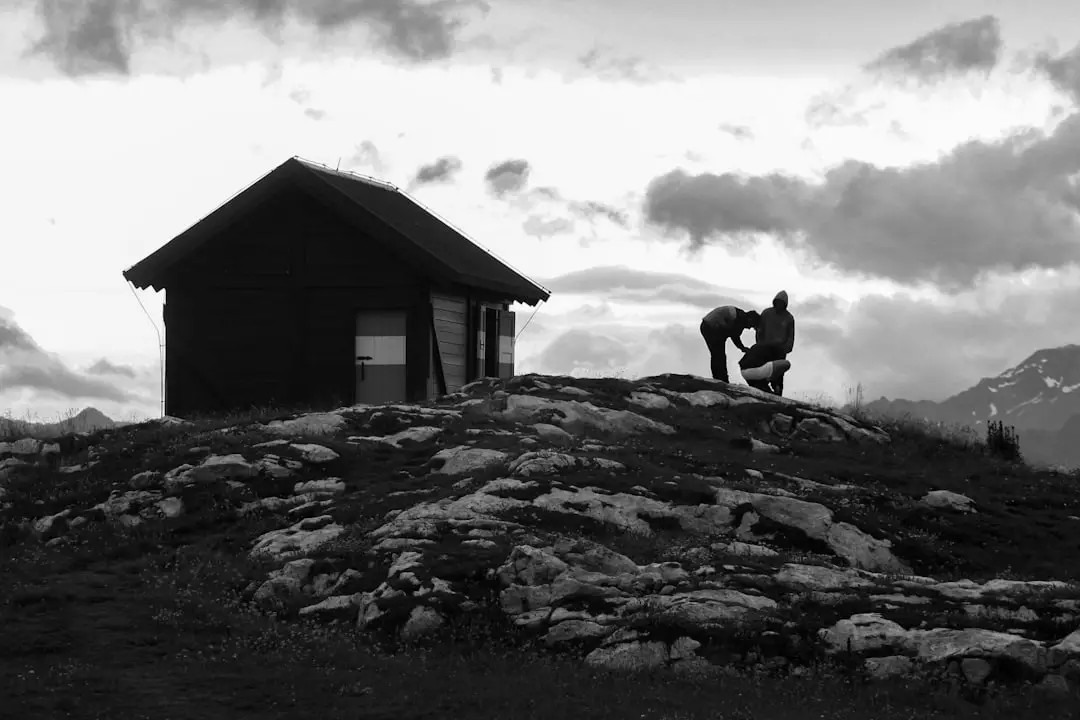Hiking shoes often evoke a mixed bag of emotions among outdoor enthusiasts and casual walkers alike. While they are essential for navigating rugged terrains and ensuring foot safety, their aesthetic appeal frequently leaves much to be desired. The unfortunate reality is that many hikers find themselves torn between the necessity of a functional shoe and the desire for something that looks good.
This dichotomy raises questions about the priorities of footwear design in the hiking industry. Are we sacrificing style for performance, or is there a way to achieve both? The hiking shoe market is flooded with options that prioritize durability, traction, and support, often at the expense of visual appeal.
As a result, many models feature bulky silhouettes and uninspiring color palettes that can make them seem less than fashionable. This article delves into the various aspects of hiking shoes, exploring their design, functionality, and the ongoing struggle between aesthetics and practicality. By examining these elements, we can better understand why hiking shoes often appear unattractive and how this reality shapes the experience of outdoor adventurers.
Key Takeaways
- Hiking shoes prioritize performance over style, making them unappealing in appearance.
- The design of hiking shoes is bulky and clunky to provide support and durability for outdoor activities.
- Hiking shoes come in unappealing shades to prioritize functionality over fashion.
- Breathability and support are prioritized over style in the design of hiking shoes, making them look “uncool.”
- Hiking shoes are built to last and provide protection, which often comes at the sacrifice of style.
Function Over Fashion: The Purpose of Hiking Shoes
At the core of hiking shoe design lies a singular focus on function. These shoes are engineered to withstand the rigors of diverse terrains, from rocky paths to muddy trails. The materials used in their construction are chosen for their durability and performance rather than their visual appeal.
For instance, many hiking shoes incorporate synthetic fabrics that resist water and abrasion, ensuring that the wearer’s feet remain dry and protected during challenging hikes. This emphasis on functionality means that aesthetics often take a backseat in the design process. Moreover, hiking shoes are equipped with features that enhance performance, such as deep lugs on the outsole for superior traction and cushioning systems that absorb shock.
These elements are crucial for maintaining stability and comfort on uneven surfaces. However, the very characteristics that make hiking shoes effective can contribute to their bulky appearance. The thick soles and reinforced toe caps, while essential for protection, can create a clunky silhouette that detracts from any sense of style.
Thus, while hiking shoes excel in their intended purpose, they often fall short in the realm of fashion.
Bulky and Clunky: The Design of Hiking Shoes

The design of hiking shoes is inherently influenced by their intended use.
Unlike casual sneakers or dress shoes, which prioritize sleek lines and lightweight materials, hiking footwear must accommodate a range of protective features. This necessity results in a bulkier design that can appear cumbersome to the untrained eye. The added weight and structure are not merely aesthetic choices; they serve vital functions in protecting the foot from rocks, roots, and other potential hazards encountered on trails. Additionally, the construction of hiking shoes often involves multiple layers of material to provide support and durability. For example, many models feature a stiff midsole that enhances stability while navigating uneven ground.This structural reinforcement contributes to the overall heft of the shoe, making it less streamlined than other types of footwear. While some brands have attempted to create lighter options, the balance between weight reduction and protective features remains a challenging endeavor. As a result, hikers may find themselves with shoes that prioritize safety over sleekness.
The Color Conundrum: Why Hiking Shoes Come in Unappealing Shades
| Brand | Number of Unappealing Colors | Number of Appealing Colors |
|---|---|---|
| Brand A | 5 | 3 |
| Brand B | 4 | 6 |
| Brand C | 6 | 2 |
When it comes to color choices in hiking shoes, practicality often reigns supreme. Many manufacturers opt for earthy tones such as browns, greens, and grays that blend seamlessly with natural environments. While these colors may be functional—camouflaging dirt and mud—they often lack the vibrancy or flair found in other types of footwear.
This choice reflects a broader trend in outdoor gear design, where functionality takes precedence over personal expression. Moreover, the materials used in hiking shoes can limit color options. For instance, synthetic fabrics designed for durability may not hold bright colors as well as traditional textiles.
As a result, hikers frequently find themselves faced with a selection of muted shades that do little to inspire excitement or individuality. This color conundrum can be disheartening for those who wish to express their personal style while enjoying outdoor activities. The lack of appealing color choices further reinforces the perception that hiking shoes are unattractive.
The Sacrifice of Style: How Hiking Shoes Prioritize Performance
In the world of hiking footwear, performance is king. The sacrifices made in terms of style are often justified by the need for safety and comfort on challenging trails. For instance, many hiking shoes feature reinforced toe caps and heel counters designed to protect against impacts and provide stability during descents.
These functional elements contribute to a more robust appearance that may not align with contemporary fashion trends. Additionally, the materials used in hiking shoes are selected for their ability to withstand harsh conditions rather than their aesthetic qualities. Waterproof membranes like Gore-Tex are commonly employed to keep feet dry but can add bulk to the shoe’s design.
While these features are essential for serious hikers who tackle diverse environments, they can create a disconnect between what is considered stylish and what is necessary for outdoor adventures. As a result, many hikers find themselves wearing shoes that prioritize performance over visual appeal.
The Battle of Breathability: Why Hiking Shoes Look So “Uncool”

Breathability vs. Structural Integrity
Many hiking shoes incorporate mesh panels to enhance airflow and wick away moisture during strenuous activities. However, these breathable materials often come at the cost of structural integrity, leading to a more unrefined appearance that some may perceive as unrefined.
The Trade-off Between Breathability and Waterproofing
The need for breathability can conflict with other essential features such as waterproofing. Many hikers prefer shoes that keep their feet dry in wet conditions but may sacrifice breathability in favor of waterproof membranes. This trade-off can lead to a bulkier design that lacks the sleekness associated with more fashionable footwear options.
The Result: Practical but Unstylish Shoes
Consequently, hikers may find themselves wearing shoes that feel practical but do not align with current style trends.
The Struggle with Support: The Chunky Look of Hiking Shoes
Support is paramount when it comes to hiking footwear, particularly for those who embark on long treks or navigate challenging terrains. To provide adequate support, hiking shoes often feature thick midsoles and substantial cushioning systems designed to absorb shock and reduce fatigue. While these elements are crucial for comfort during extended hikes, they contribute to a chunkier appearance that can be perceived as unattractive.
The need for arch support also plays a significant role in the design of hiking shoes. Many models incorporate contoured footbeds or shank plates to enhance stability and prevent foot fatigue over long distances. These supportive features add bulk to the shoe’s overall profile, making them appear less streamlined than other types of footwear.
As a result, hikers may find themselves grappling with the reality that optimal support often comes at the expense of visual appeal.
The Durability Dilemma: Why Hiking Shoes Are Built to Last
Durability is a hallmark characteristic of quality hiking shoes, designed to withstand the rigors of outdoor adventures over time. Manufacturers often use high-quality materials such as Vibram rubber for outsoles and reinforced stitching to ensure longevity under challenging conditions. While this focus on durability is essential for avid hikers who require reliable footwear, it can also contribute to an unappealing aesthetic.
The robust construction required for durability often results in heavier materials and thicker components that detract from a sleek appearance. Additionally, many durable hiking shoes feature rugged outsoles designed for traction on various surfaces, which can further amplify their bulky look. While these features are indispensable for those who spend significant time on trails, they can create an image that is far from fashionable.
The Price of Protection: Understanding the Unattractiveness of Hiking Shoes
The protective features inherent in hiking shoes come at a cost—both financially and aesthetically. High-quality materials designed for safety and performance often lead to higher price points compared to casual footwear options. Hikers may find themselves investing in shoes that prioritize protection over style, leading to an unfortunate reality where unattractive designs dominate the market.
Moreover, the emphasis on protection can lead to designs that appear overly utilitarian or industrial. Many hiking shoes incorporate elements such as reinforced toe caps and heavy-duty laces that serve practical purposes but do little to enhance visual appeal. This focus on functionality can create an impression that hiking shoes are merely tools rather than stylish accessories, further perpetuating their unattractive reputation.
The Evolution of Hiking Shoes: From Function to Fashion
Despite their current reputation for being unattractive, there has been a gradual evolution in the design of hiking shoes over recent years. Some brands have begun to recognize the demand for more stylish options without compromising performance or safety features. Innovations in materials and design techniques have allowed manufacturers to create lighter-weight models with sleeker profiles while still providing essential support and protection.
This shift towards blending function with fashion has led to an emergence of hybrid styles that cater to both outdoor enthusiasts and casual wearers alike. Brands are increasingly experimenting with color palettes and designs that appeal to a broader audience while maintaining the core attributes necessary for effective hiking footwear. As this trend continues to evolve, it is possible that future generations of hiking shoes will strike a better balance between aesthetics and performance.
Embracing the Ugly Truth of Hiking Shoes
The world of hiking shoes presents an intriguing paradox where functionality often overshadows fashionability. While these shoes are indispensable for outdoor adventures due to their protective features and durability, they frequently fall short in terms of aesthetic appeal. Hikers must navigate this complex landscape where performance takes precedence over style—a reality that can be frustrating for those who wish to express their individuality through their footwear choices.
As we continue to explore advancements in design and materials within the hiking shoe industry, there is hope for a future where function and fashion coexist harmoniously. Until then, embracing the “ugly truth” about hiking shoes means recognizing their vital role in ensuring safety and comfort on trails while accepting that style may not always be part of the equation.
If you’re someone who loves to explore the great outdoors, you may have wondered why hiking shoes are often considered so ugly. According to a recent article on TakeTravelInfo, the focus of hiking shoe design is primarily on functionality and durability rather than aesthetics. This prioritization of performance over style explains why hiking shoes may not always be the most visually appealing footwear choice.
FAQs
Why are hiking shoes so ugly?
Hiking shoes are designed for functionality and durability rather than aesthetics. The focus is on providing support, traction, and protection for the feet during outdoor activities.
What factors contribute to the “ugly” appearance of hiking shoes?
Hiking shoes often have a bulky and rugged appearance due to the materials used for durability and protection. Additionally, the design prioritizes features such as toe guards, ankle support, and heavy-duty outsoles, which can contribute to their less aesthetically pleasing look.
Are there any benefits to the “ugly” appearance of hiking shoes?
The rugged appearance of hiking shoes reflects their ability to withstand rough terrain and provide stability and protection for the wearer. The focus on functionality over aesthetics ensures that hikers can rely on their shoes to perform well in outdoor environments.
Can hiking shoes be both functional and aesthetically pleasing?
Some brands have started to incorporate more stylish designs into their hiking shoe lines, offering options that combine both functionality and aesthetics. However, the primary focus of hiking shoes remains on providing support and protection for outdoor activities.
